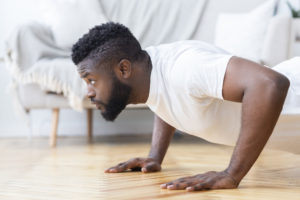
In the most extensive study to date, researchers focused on the relationship between sleep apnea and levels of activity in the general community. Lifestyle, medical, socio-demographic, and sleep health data were collected from more than 155,000 people for the study. All participants were part of the Ontario Health Study.
All participants were required to answer questionnaires regarding their gender, age, and sleep patterns. Of the participants, 60% were women, and 40% were men with a median age of 46 years. Approximately 6.9% of all participants reported being told by a doctor that they have sleep apnea. These participants were found to lead a more sedentary life, sitting for a median of 4.4 more hours per week than those without sleep apnea.
It was concluded that those with a modest increase in physical activity, including walking, showed a 10 percent reduction in the risk of developing sleep apnea.
“Our results highlight the importance of physical activity as a preventive measure against developing sleep apnea,” said senior author Lyle Palmer, who is the professor of genetic epidemiology at the University of Adelaide in Australia. “One surprising finding was that not only vigorous physical activity but also just walking alone was associated with a decreased risk of sleep apnea.”
Mounting Evidence of Benefits
This study adds to the mounting evidence showing the benefits of physical activity for overall health. It also helps to give physicians another tool to treat mild to moderate sleep apnea that may be more appealing to patients. Merely adding 20 minutes to a daily walk and increasing vigorous daily activity by eight minutes would be enough to achieve a lower sleep apnea risk.
Many American’s with sleep apnea go undiagnosed, and it is only until another health issue is addressed that they are diagnosed. In fact, it is estimated that more than 29 million American adults have sleep apnea. It is a very common sleep disorder characterized by breathing pauses and periodic snoring. Associated with an increased risk of heart disease, stroke, high blood pressure, and other potentially dangerous conditions, it is a health issue that should not be ignored.
“The rates of sleep apnea in children and adults are continuing to rise. Therefore, understanding the role of modifiable protective factors for sleep apnea is important,” said Palmer. “Exercise is one such protective factor and has many other positive effects on general health. Sleep health care professionals should be trying to get their patients to exercise more.”
If someone suspects they have sleep apnea, they should always contact their health care provider. Untreated sleep apnea can cause daytime drowsiness, cause accidents, and can also cause serious health risks.